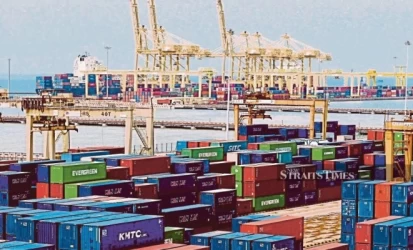Sea freight in the port of Hamburg
The Port of Hamburg, Germany’s largest seaport and one of the busiest in Europe, serves as a key gateway for international trade and maritime transport. Established in 1189, it has grown to become one of the most important logistical hubs globally. Located on the Elbe River, Hamburg's strategic location enables seamless connectivity to both European and global markets. This article explores the infrastructure, logistics, and services offered by the Port of Hamburg, with a special focus on maritime transport.
Strategic Importance
As Europe's third-largest port, the Port of Hamburg handles an average of 8.7 million TEUs (twenty-foot equivalent units) annually. Its proximity to industrial regions in Central and Eastern Europe, combined with cutting-edge logistics infrastructure, makes it a key player in the maritime transport and global supply chain. The port connects directly to over 900 ports worldwide, handling a wide variety of cargo, including containers, bulk goods, and breakbulk.
Infrastructure
The Port of Hamburg covers approximately 73 square kilometers and features numerous state-of-the-art facilities for efficient maritime transport. It offers several specialized terminals for handling various types of cargo:
- Container Terminals: Container handling is one of the port’s key operations, with dedicated terminals equipped to process large volumes quickly. The port's automated systems and cutting-edge technology ensure efficient container stacking and retrieval.
- Bulk Cargo Terminals: Hamburg’s bulk terminals handle raw materials like coal, ores, grain, and other commodities. These specialized facilities ensure the efficient loading and unloading of bulk shipments.
- Breakbulk Terminals: These terminals cater to non-containerized cargo such as machinery, vehicles, and oversized items, with modern equipment for fast and secure handling.
- Cruise Terminals: The port also has terminals dedicated to passenger transport, particularly for cruise liners. Cruise passengers use Hamburg as a hub to explore Northern Europe and the Baltics.
Environmental Initiatives
Sustainability is a core focus for the Port of Hamburg. The port has implemented several eco-friendly initiatives aimed at reducing its carbon footprint:
- Green Shipping: The port encourages the use of low-sulfur fuels and LNG (liquefied natural gas) for ships, reducing emissions of sulfur dioxide and other pollutants.
- Onshore Power Supply: Ships docking at Hamburg can plug into the port’s onshore power supply, significantly reducing emissions from ships' engines while at berth.
- Sustainable Infrastructure: The port is also investing in energy-efficient cranes and automated logistics systems to reduce energy consumption.
Connectivity and Intermodal Transport
One of the Port of Hamburg’s major strengths is its exceptional connectivity to both European and global markets. The port offers extensive intermodal transport options, including:
- Rail: Hamburg has a vast rail network that links directly to several inland terminals across Europe. More than 200 freight trains pass through the port each day, making it one of the most rail-connected ports in Europe.
- Road: The port is connected to major highways, providing easy road transport links to other regions in Germany and beyond. Dedicated trucking lanes ensure smooth movement of goods in and out of the port.
- Waterways: The Elbe River provides inland waterway connections to industrial regions in Germany and Europe, allowing the transport of goods by barge, reducing road congestion.
Customs and Trade Facilitation
The Port of Hamburg offers efficient customs and trade facilitation services, making it a seamless entry point for international goods. Hamburg customs are known for their speed and transparency, which reduces delays and enhances the efficiency of international trade. The port is part of the EU’s customs union, which simplifies the import and export process for European traders.
Digitalization and Innovation
The Port of Hamburg is at the forefront of digital innovation, continuously improving its operations with advanced technologies. The port uses data-driven platforms to streamline operations and manage traffic flow. Some of the key digital initiatives include:
- Port Community System: This system integrates all port stakeholders, including customs, freight forwarders, and shipping companies, into a single digital platform. It facilitates real-time data exchange and significantly reduces paperwork.
- Smart Port Logistics: Using big data and IoT (Internet of Things) devices, the port monitors cargo movements, weather conditions, and terminal operations in real-time, optimizing resource allocation and minimizing delays.
- Automation: The port employs autonomous cranes and container-handling equipment to boost efficiency. This has helped reduce the average turnaround time for vessels and improved the overall capacity of the port.
Challenges and Future Prospects
Despite its success, the Port of Hamburg faces several challenges, including competition from other European ports like Rotterdam and Antwerp. Additionally, there are concerns over dredging the Elbe River to accommodate larger vessels, which has raised environmental concerns. However, the port’s commitment to modernization, sustainability, and innovation ensures that it remains competitive in the long run.
Looking ahead, the port is poised to benefit from global trade growth, especially in the Asia-Europe corridor. With continued investment in infrastructure and digital technologies, the Port of Hamburg is expected to maintain its position as one of the leading maritime transport hubs in the world.
Conclusion
The Port of Hamburg stands as a beacon of efficiency, sustainability, and innovation in the world of maritime transport. Its strategic location, cutting-edge infrastructure, and focus on environmental sustainability make it a key player in global trade. As the port continues to evolve, it will remain a critical link in the global supply chain, connecting Europe to markets around the world.
If you have any specific questions or need further assistance, feel free to ask!










